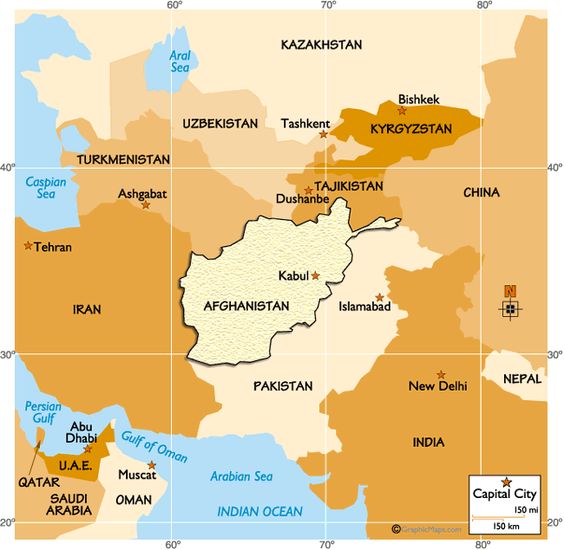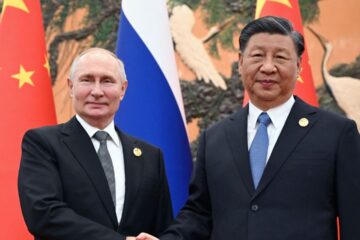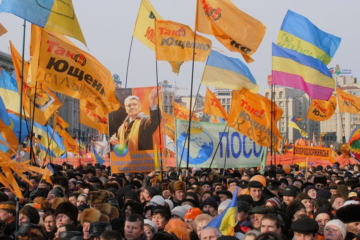[Part 3] Why did the US fail in AFGHANISTAN (2001-2021)
[Published originally on 18/09/2021 together with Part 1 and Part 2]
What you want to understand… 🤔
- What military and diplomatic strategies did the US adopt in Afghanistan?
- What mistakes did they make?
- Who might be in good terms with the Taliban now that the US has left?
- What difficulties may they face in governing Afghanistan?
Why did the US fail in Afghanistan (2001-2021) ?
The US withdrawal from Afghanistan is part of an overall withdrawal from the Middle East: in Iraq, the US military mission is supposed to end by the end of 2021 (few troops will remain to help local armed forces maintain security) and in Syria, 900 US troops are still present on the ground to train Syrian Democratic Forces fight jihadist groups. The US are currently undertaking a strategic reorientation towards the Asia-Pacific region in order to counter Chinese influence.
However, we cannot say that the US has withdrawn from Afghanistan deliberately. It was forced to leave this country as it didn’t manage to adapt its operational and diplomatic strategy to the circumstances. Let’s analyse the American failure in Afghanistan.
A. Why did the US lost the war in Afghanistan ?
1. Not adapting their operational strategy
Let’s first review some key principles that a government has to understand before engaging in a counterinsurgency campaign like the US in Afghanistan 1:
- Irregular warfare cannot have a military outcome, only a political one.
- An operation’s success is measured by the acquiescence or support of local populations, not by the death toll of insurgents (which is just “icing on the cake”).
- Counterinsurgency campaigns usually last 10 years. Indeed, when your enemy is greatly disadvantaged materially, it will try to outlast you by using time against you. War cannot be won on the battlefield but in negotiation rooms with a strong political will and a pragmatic and realistic program.
- Counterinsurgency campaigns are man-intensive: there should be around 20 soldiers for 1,000 people in the general population. Technology is actually far from being of paramount importance to win such operations; what matters the most is the number of military forces on the ground.
- An insurgency spread because it proposes an alternative political/spiritual paradigm to the current one. Therefore, counterinsurgency forces have to undermine the insurgents’ source of support by promising a better alternative.
The problem of the US was that it wanted to involve as few soldiers as possible and mainly resort to air strikes and technology in order to defeat the Taliban.
Besides, until 2009, it didn’t understand the importance of mobilising and training local forces to fight along their side.
According to the US Senate, to kill 1 insurgent in Afghanistan or in Iraq, the US had to shoot 300,000 bullets… Indeed, US soldiers used to shoot even when targets weren’t perfectly identified and when the probability of killing was quite low. We can see here that US leaders didn’t understand at first that in a counterinsurgency campaign the most important is not killing rebels but rather winning popular support.
2. Lack of adaptation of their diplomatic strategy
The US diplomatic strategy has depicted China and Russia as major threats for several decades now. This vision has had disastrous consequences for the US effort to become the main peace-builder in Afghanistan.
With regards to the relationship between India and Pakistan:
In 2005, the US initiated a partnership with India regarding security matters in order to counterweight China’s growing presence on the global stage. In fact, the US has become India’s third arm supplier after Russia and Israel. Besides, between 2016 and 2020, President Trump regularly criticized Pakistan about its ambiguous position and the fact that it was supporting some Islamist militias. He therefore put an end to the security and financial assistance provided to Pakistan. In the meantime, Trump invited India to play a greater role in the stabilisation of the region.
This close cooperation worried India’s historical enemy, Pakistan. The latter thus reduced its support to US operations. As mentioned earlier, the Taliban are predominantly Pashtuns, an ethnic group that represents 40% of the Afghan population (15M people) and 20% of the Pakistani population (43M people). Besides, according to Jean-Bernard Pinatel in an interview for the think tank Géopragma, Pakistani leaders never really wanted to attack the Taliban’s refuge regions in Pakistan because in case of a Taliban victory in Kabul, they hoped to use Afghan support to counterweight the Indian rival.
The US movement towards India opened the door for China. Indeed, China reinforced its military and economic ties with Pakistan. China is currently Pakistan’s largest arm supplier and its third largest trading partner.

With regards to Russia:
In the aftermath of 9/11, Putin met NATO Secretary General, Baron George Robertson, and offered Russia’s help. He proposed to involve the Russian 201st Motor Rifle Division that was stationed in Tajikistan as well as the Russian air base located in Uzbekistan. However, the US declined the offer out of distrust for an old “enemy” that was still considered dangerous.
B. Who will be the Taliban’s partners ?
1. Qatar
Before 2011 and the Arab Spring, Qatar played the role of regional mediator. Its position has always been ambiguous with its partners. For instance, while it currently has good relations with Iran, it also hosts US soldiers.
Qatar invests a lot in Western countries and as a result represents a privileged interlocutor in the Middle East. That’s why Qatar was chosen to host negotiation rounds in Doha between the Taliban and the Afghan government. However, Qatar supports political Islam and regional Islamist groups. This last point motivated Saudi Arabia, United Arab Emirates, Bahrain and Egypt to impose an embargo on Qatar in June 2017 due to alleged ties with terrorist organisations. Several countries later joined the movement like Jordan. The embargo was lifted in July 2021.
We can wonder what role Qatar will play with the Taliban now that the US has left Afghanistan. Indeed, the Taliban are free to build ties with whoever they want: Qatar was just an intermediary chosen by Western powers during the Afghan war. Nonetheless, in the future when Taliban will be willing to communicate with the US for instance it is highly probable that Qatar will once again play a major diplomatic role.
Qatar is also the country through which most of the international humanitarian help to Afghanistan will transit.
2. Pakistan
Pakistan is an historical ally of the Taliban. As soon as the movement took shape in 1994, Pakistan provided it with financial and logistical help.
However, Pakistan endeavours to stay in good terms with Western countries. That’s why it organised the departure of Amhad Massoud, Ahmad Shah Massoud’s son, even though he keeps taking on the Taliban with his fighters in the Panjshir Valley.
3. Russia
Putin’s Russia also endeavours to play a role in the future of Afghanistan. It may seem a bit strange at first because it was the USSR that invaded Afghanistan in 1979.
However, if you take a look at the past few years, Russia and the Taliban shared a common objective: fighting Americans and putting them out of the race for global influence. That’s why Russia allegedly supported diplomatically and militarily the Taliban.
Russian help is also part of a bigger plan. As soon as the US loss was predicted (roughly in 2014 with the official end of their military mission while the Taliban were still powerful and dangerous), several countries understood that they should be on good terms with the Taliban. Russia was among these countries. It didn’t want its privileged zone of influence in Central Asia (its “near abroad”), and especially Uzbekistan and Tajikistan, to become destabilised by the Islamist influence of its future neighbours.

It is worth mentioning that Russia also lusts after Afghan natural resources. There are some rare earth elements (REE) there like gold, silver, copper, platinum, iron, aluminium and uranium. Afghan soil is also rich in petroleum and natural gas.
4. China
As mentioned previously, the US move towards India has allowed China to get closer to Pakistan and thus play an indirect role in Afghanistan. Besides, China, like Russia, covet Afghanistan’s natural resources.
Since 2014, China regularly talks with the Taliban. It even organised negotiations between the Taliban and the Afghan government in 2015 in Urumqi the capital of the Xinjiang region.
China, like Russia and its “near abroad”, wants to protect the Xinjiang region from the Taliban’s Islamist influence and cut potential support to nationalist militants there.
5. Iran
Iran shares a 900km border with Afghanistan. Even though Iran is a Shia country and the Taliban are Sunni Muslims, their relation during the last few years was not conflictual. As soon as the Taliban’s victory was anticipated in 2014, Iran got closer to the Taliban and even invited them several times in Teheran.
This cordial relationship may explain why the rapid take over of Afghanistan by the Taliban didn’t translate into violent fighting with local Shia groups.
This rapprochement between Iran and the Taliban can be explained by Teheran’s willingness to secure its border by having the Taliban controlling migration flows and cross-border drug trafficking networks.
6. Turkey
Recep Tayyip Erdoğan’s Turkey also seeks to gain influence in Afghanistan now that it’s controlled by the Taliban.

Since the end of World War II, Turkey has endeavoured to be a mediator between Western powers (it is part of NATO since 1952) and Muslim countries in general. However, during the War in Afghanistan (2001-2021), Qatar was privileged over Turkey to play this role of intermediary.
Now Turkey tries to gain economic leverage in Afghanistan by resorting to its construction industry so as to rebuild Afghan cities destroyed by the war.
C. Will the Taliban be able to govern Afghanistan ?
The Taliban come mainly from rural regions where their rules and strict application of the shari’ah are largely preferred to the Afghan government’s judicial system. Indeed, Taliban justice, though violent and strict, is understood by rural populations since it is based on the Quran. Besides, even though some would consider it expeditious, shari’ah courts only need one hearing to take a decision which helps settle disputes faster.
One of the main challenges the Taliban will face will be the resistance of Afghan cities that have lived under Western influence for 20 years. Urban populations will thus be way less receptive to Taliban rules regarding women rights, human rights as well as social and cultural tolerance.
A major question lingers: will the Taliban find their place in the international world order alongside other nations or will Afghanistan remain a pariah state? If this question interests you, you may want to read my article on Daesh’s Statehood and Caliphate !
If you want to read the previous parts of this article click there:
- Part 1 : Wars in Afghanistan between 1979-2001
- Part 2 : The War in Afghanistan since the US intervention in 2001



8 Comments
гет ю · 4 March 2023 at 12:43 pm
I wanted to thank you for this good read!! I absolutely loved every little bit ofit. I have you bookmarked to look at new stuff you post.
gate io · 26 February 2023 at 2:41 pm
For my thesis, I consulted a lot of information, read your article made me feel a lot, benefited me a lot from it, thank you for your help. Thanks!
From Clinton to Biden: a look back on 30 years of US leadership – geopol-trotters · 14 April 2023 at 8:10 pm
[…] US couldn’t be the world’s policeman anymore and that recent interventions abroad failed (Iraq, Afghanistan and Libya). On one hand, Obama concluded that the US had to promote multilateralism as its hegemony […]
South-East Asia in the Middle of a Superpower Rivalry - geopol-trotters · 21 November 2022 at 7:54 pm
[…] designed the “Pivot to Asia” policy. The latter’s objective was to progressively withdraw from the Middle East and expand the US influence in the Asia-Pacific region through multilateral agreements to […]
The French Intervention in Mali since 2013 - geopol-trotters · 25 September 2022 at 6:54 am
[…] of these new infrastructures. This issue is linked in part to the French decision, similar to the US one in Afghanistan, not to commit too many ground troops. Indeed, they relied primarily on airpower in order to […]
[Part 1] Wars in Afghanistan (1979-2001) - geopol-trotters · 17 May 2022 at 11:40 am
[…] [Published originally together with Part 2 and Part 3] […]
[Part 2] The War in Afghanistan (2001-2021) - geopol-trotters · 17 May 2022 at 11:12 am
[…] [Published originally on 18/09/2021 together with Part 1 and Part 3] […]
Wars in Afghanistan since 1979 and the recent US failure [Part 2] - geopol-trotters · 16 May 2022 at 11:56 am
[…] [Published originally on 18/09/2021 together with Part 1 and Part 3] […]